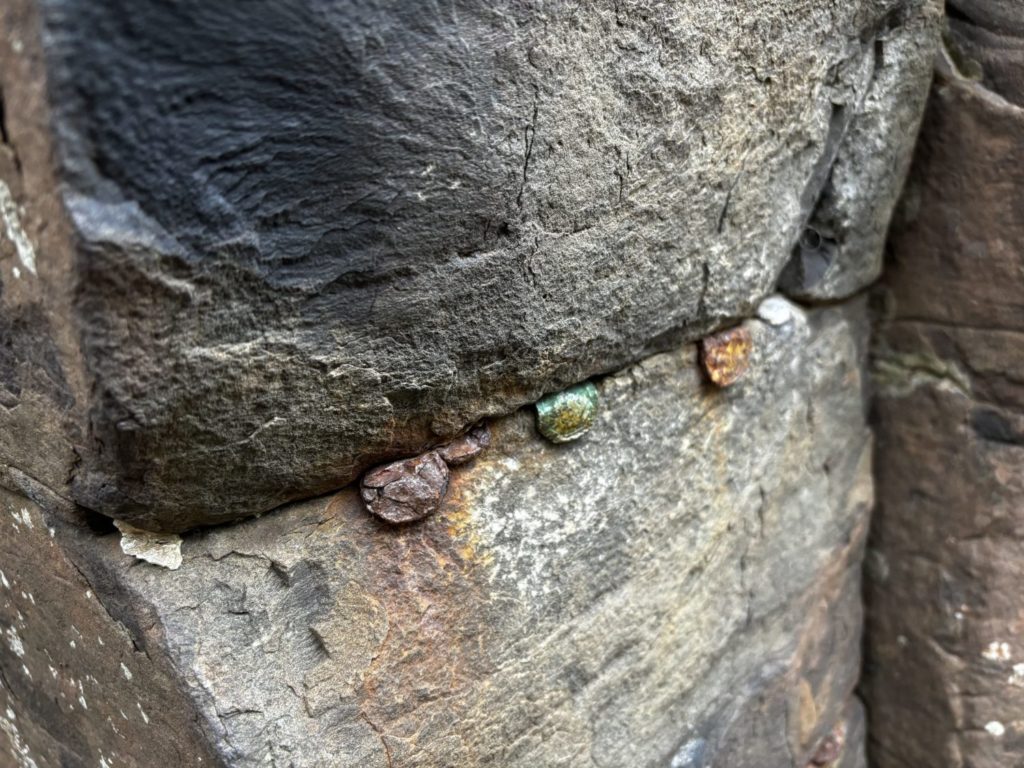COINS left by tourists at one of Northern Ireland’s most popular beauty spots are causing significant damage to the site.
Made up of more than 40,000 basalt columns, the Giant’s Causeway was designated Northern Ireland’s first Unesco World Heritage Site in 1986.
Visitors have been lodging coins into the basalt formations at the Giant’s Causeway in Co. Antrim for over 40 years.
 Some of the coins left behind at the Giant's Causeway
Some of the coins left behind at the Giant's CausewayThe practice has become significantly more widespread in the past decade, a spokesperson for the attraction has confirmed, with tourists, inspired by the sight of existing coins, inserting their own into the natural joints and fractures of the stones.
“As these coins corrode, they expand, leading to damage and staining of the rock surface,” they explained.
The National Trust, which manages the site, said the cost of removing the coins could be as much as £30k and has urged visitors to stop the practice in order to protect the famous landmark.
“We know that visitors really love and cherish the Giant's Causeway, and many form deep personal connections to this special landscape," Dr Cliff Henry, National Trust Nature Engagement Officer at the Giant’s Causeway, said.
 The Giant's Causeway in Co. Antrim was designated an UNESCO World Heritage Site in 1986
The Giant's Causeway in Co. Antrim was designated an UNESCO World Heritage Site in 1986"We know some may want to leave a token of their visit, but the coins are causing damage and we are urging people to stop the practice and to leave no trace so this natural wonder remains special for future generations.”
A report by the British Geological Survey in 2023 concluded that the coins wedged into the joints and cracks in the rock is having a detrimental impact on the basalt rock of the Giant’s Causeway, both aesthetically and physically.
“The report has found that fracturing and disintegration of the basalt rock adjacent to joints and cracks into which coins have been inserted is the result of the ‘expansive delamination of the coins upon oxidation'," Dr Henry, explained.
“In other words, the coins are rusting, and expanding to three times their original thickness, which puts huge pressure on the surrounding rock causing it to crumble.
"Unsightly streaks of copper, nickel and iron oxides are also staining the stones where the coins are corroding.”
In response to the survey a trial coin removal was conducted by Cliveden Conservation in February 2024.
Building on the success of this trial, and with funding from the Northern Ireland Environment Agency (NIEA), a pilot conservation project was further commissioned in the summer of 2024 by the National Trust and the Causeway Coast and Glens Heritage Trust, on behalf of the WHS Steering Group.
Between January and March 2025 stone conservation specialists CONSARC and The Rock Stone Masonry carried out detailed mapping and surveying of the site and carefully removed coins from test areas.
In total nine kilograms of coins were removed from the stones and a second phase of coin removal is due to take place this autumn.
The National Trust is now appealing to visitors to help these efforts by not adding any more coins at the site.
“It is hoped that if visitors see fewer coins in the stones and hear appeals to stop the damaging practice the problem can be solved," Dr Henry said.
“We protect and care for places so people and nature can thrive," he added.
"We are appealing to visitors to help us protect the World Heritage Site by stopping the practice of inserting coins into the Causeway stones.”

